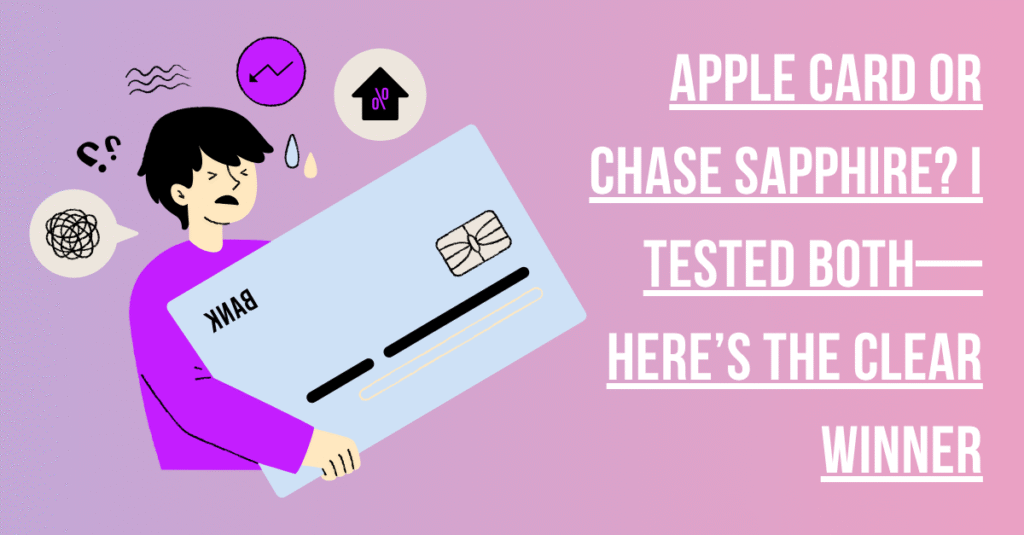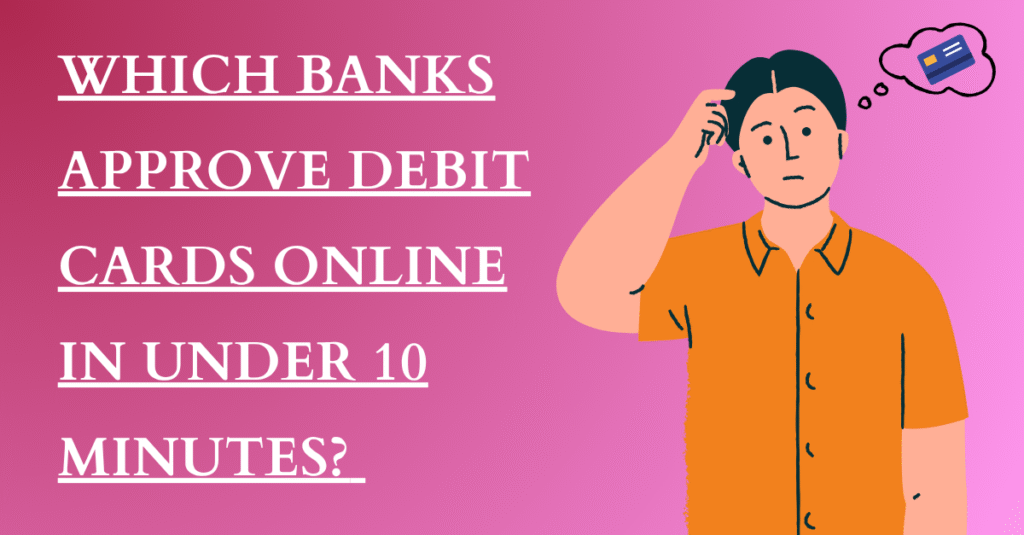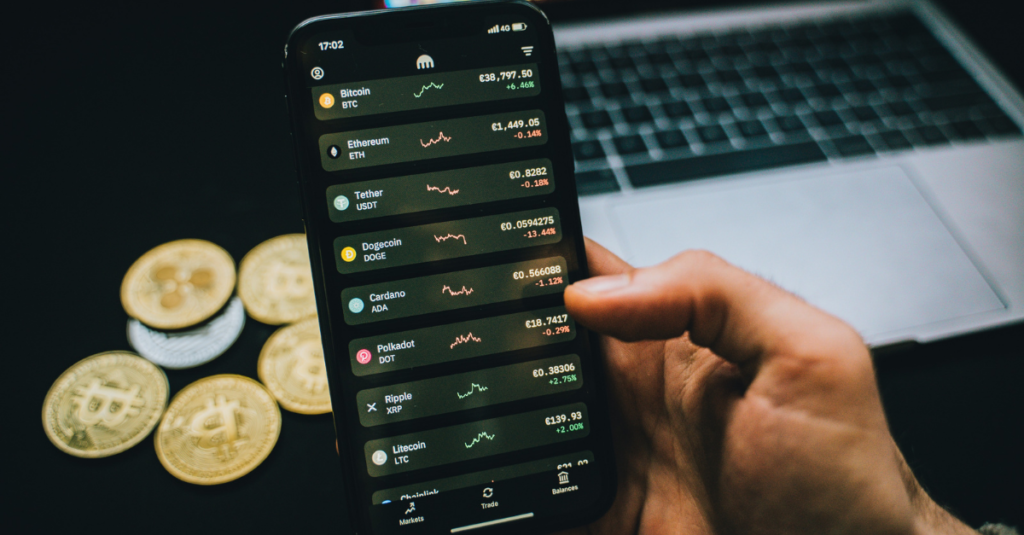Apple Card or Chase Sapphire? I Tested Both—Here’s the Clear Winner
Introduction:
I have a confession: I’m a credit card nerd. I love rewards, cashback, and perks—so much that I decided to put two of the most talked-about cards to the test. For six months, I used the Apple Card and Chase Sapphire Preferred side by side, tracking every purchase, reward, and headache.
The goal? To find out which one actually deserves a spot in your wallet.
Spoiler: One made me feel like a rewards genius. The other? Well, let’s just say I had some regrets.
If you’re torn between Apple’s sleek titanium card and Chase’s travel powerhouse, this real-world breakdown will give you the unfiltered truth—no marketing fluff, just cold, hard results.
Round 1: First Impressions – Unboxing & Design
Apple Card: The Instagram-Worthy Titanium Card
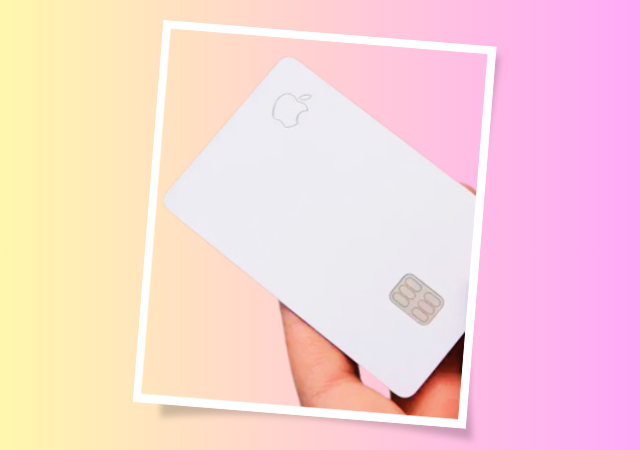
The moment I opened the Apple Card’s packaging, I understood the hype. The weighty titanium card feels like a luxury item—no raised numbers, no obnoxious logos, just a minimalist, brushed-metal finish.
But here’s the catch: You barely use it.
Since Apple pushes Apple Pay (which earns higher cashback), the physical card mostly sat in my wallet. Still, I won’t lie—pulling it out at a restaurant got me a few impressed looks.
Chase Sapphire Preferred: The Traveler’s Workhorse
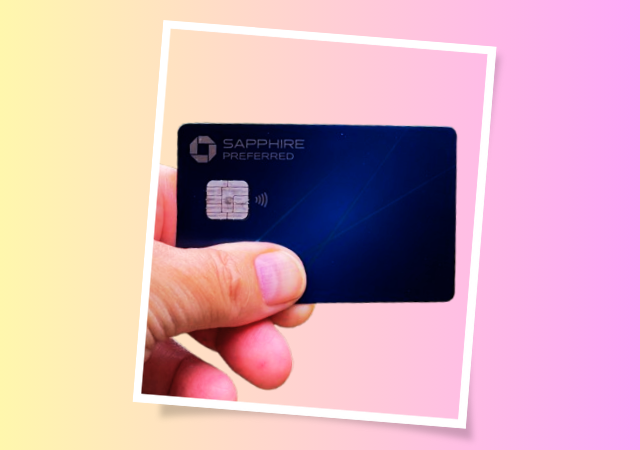
The Chase Sapphire Preferred doesn’t scream luxury, but it doesn’t need to. The metal-core card has a sturdy feel, and the deep blue design is professional without being flashy.
Unlike the Apple Card, this one lives in my wallet because it’s my go-to for dining and travel. No gimmicks—just a reliable rewards machine.
Winner? Apple Card for aesthetics, Chase for practicality.
Round 2: Rewards & Cashback – Where You Actually Earn
Apple Card’s Cashback: Simple But Limited
Apple’s rewards system is straightforward:
-
3% back at Apple, Uber, Walgreens, Nike, and a few others.
-
2% back on all Apple Pay purchases.
-
1% back if you use the physical card.
Sounds decent, right? Here’s the problem: Most stores don’t accept Apple Pay. I found myself constantly asking, “Do you take tap-to-pay?” only to default to the measly 1% rate.
The Daily Cash feature is nice—you get rewards instantly—but unless you’re an Apple superfan, the earning potential is weak.
Chase Sapphire Preferred: Points That Add Up Fast
Chase’s rewards are where things get exciting:
-
3x points on dining (including delivery & takeout).
-
3x points on online groceries.
-
2x points on all travel (flights, hotels, even parking).
-
1x points on everything else.
But the real magic? Transfer partners. Chase Ultimate Rewards points can be moved to airlines like United or hotels like Hyatt, often doubling or tripling their value.
I booked a $1,200 flight to Europe using points that only cost me 60,000 Chase points—effectively a 2-cent-per-point redemption, far better than Apple’s flat cashback.
Winner? Chase Sapphire, no contest.
Round 3: Travel Perks – The Game Changer
Apple Card: Basically None
If you travel even occasionally, the Apple Card is a letdown. No lounge access, no travel insurance, no foreign transaction fees (but only if you use Apple Pay—physical card transactions still charge fees).
I learned this the hard way when my flight was delayed, and I had zero protection—something Chase would’ve covered.
Chase Sapphire Preferred: A Travel Powerhouse
Here’s where Chase dominates:
-
No foreign transaction fees (unlike Apple’s physical card).
-
Primary rental car insurance (saves you from paying extra at the counter).
-
Trip delay/cancellation insurance (got me a free hotel room when my flight was canceled).
-
25% more value when redeeming points through Chase Travel.
Even if you only take one trip a year, these perks can save you hundreds.
Winner? Chase, by a landslide.
Round 4: Fees & Hidden Costs
Apple Card: The “No Fee” Illusion
Yes, the Apple Card has no annual fee, but that’s because it offers so little. The APR is high (19.24%-29.49%), so carrying a balance is costly.
Worse? If you use the physical card abroad, you’ll pay a 3% foreign transaction fee—something most travel cards waive.
Chase Sapphire Preferred: $95 Fee, But Worth It
The $95 annual fee might seem steep, but the rewards and perks easily justify it.
For example:
-
A single trip delay claim saved me $200.
-
The 10% annual points bonus adds up.
-
No foreign fees means no surprises overseas.
If you spend even $3,000 a year on dining/travel, you’ll out-earn the fee.
Winner? Chase again—the fee pays for itself.
Round 5: Approval & Credit Impact
Apple Card: Easier to Get (But Not for Everyone)
Apple’s soft pull pre-approval is nice, but approval isn’t guaranteed. You’ll need at least a 660+ credit score, and limits can be low.
Chase Sapphire Preferred: Tougher, But More Rewarding
Chase wants 700+ credit scores, and they’re picky if you’ve opened too many cards recently.
But once you’re in? The 50,000-80,000 point sign-up bonus (worth $750-$1,200 in travel) is unbeatable.
Winner? Apple for accessibility, Chase for long-term value.
Final Verdict: Which Card Should YOU Choose?
Pick the Apple Card If:
✅ You live in Apple’s ecosystem and use Apple Pay daily.
✅ You want no annual fee and simple cashback.
✅ You don’t travel much and just want a sleek card.
Pick the Chase Sapphire Preferred If:
✅ You dine out or travel even occasionally.
✅ You want travel insurance, better rewards, and lounge access.
✅ You’re okay with a $95 fee that pays for itself.
My Personal Winner? Chase Sapphire Preferred
After six months, I canceled my Apple Card. The Chase Sapphire Preferred simply outperformed it in every practical way—better rewards, travel perks, and long-term value.
Unless you’re all-in on Apple Pay, Chase is the smarter choice.
Final Thought:(Apple Card or Chase Sapphire?)
It’s not bad—just overhyped. If Apple added travel perks and expanded its 3% categories, it could compete. But right now? Chase is the clear winner.
Which card are you leaning toward? Let me know in the comments!
Read More: 9 No Annual Fee Credit Cards That Act Like Premium Travel Cards

My name is Rohit Vagh and I’m a content writer specializing in fashion and lifestyle. I have three years of experience in this field and have written various articles. My writing style is creative and engaging, and I strive to create content that resonates with my readers. I have a deep passion for fashion and am constantly researching the latest trends and styles to make sure my readers are up to date. I’m excited to continue my career in blogging, and I’m always looking for new opportunities in the fashion and lifestyle space.

